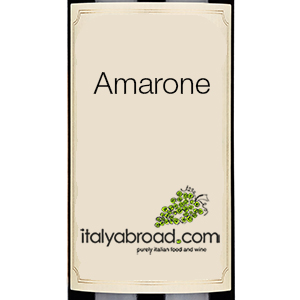 DELIVERY FROM £4.95
DELIVERY FROM £4.95 FREE DELIVERY FOR ORDERS OVER £100
FREE DELIVERY FOR ORDERS OVER £100Home » Community » Wine and Grape Guide » Amarone della Valpolicella DOCG

Amarone della Valpolicella DOCG is one of Italy’s most iconic and prestigious red wines. Produced in the Valpolicella region of Veneto, nestled between Lake Garda and Verona, Amarone is made primarily from a blend of native grapes - Corvina, Molinara and Rondinella - the same varieties used in all Valpolicella wines.
What makes Amarone unique is its traditional winemaking method called appassimento, in which harvested grapes are left to dry for approximately 120 days. This process concentrates the sugars and aromas, resulting in a full-bodied, high-alcohol red wine with rich, complex flavours and exceptional ageing potential. After drying, the grapes are gently pressed and aged in wooden barrels for a minimum of two years. The leftover grape skins are then reused to produce Valpolicella Ripasso, where fresh Valpolicella wine is "re-passed" over the Amarone pomace for enhanced depth and structure.
The Amarone della Valpolicella DOCG classification includes various subzones. Wines can be labelled as “Classico”, referring to the historic heart of the Valpolicella region, or “Valpantena”, a recognised growing area in the northeast. Wines made outside these subzones cannot include geographic indications on the label. The DOCG status, granted in 2009, protects both the name and the production methods of Amarone.
The disciplinare, or official wine regulation, lists all permitted grape varieties and defines strict production guidelines. Due to the number of allowed grapes and the flexibility in their proportions, Amarone wines can vary significantly between producers and vintages, even within the same winery, offering a wide range of styles, from elegant and balanced to bold and opulent.
In exceptional vintages, a Riserva version of Amarone can be produced, requiring a minimum of four years of ageing before release. These wines are highly sought after for their complexity and longevity.
Amarone’s commercial success has inspired many Italian producers to adopt the appassimento technique, creating wines labeled as “appassimento” to showcase the drying process, though they cannot legally be called Amarone unless produced within the DOCG regulations and in the majority of cases, produce overly sweet wines lacking acidity.
With its powerful structure, concentrated fruit, and velvety tannins, Amarone della Valpolicella DOCG remains a benchmark for Italian red wines and a must-try for wine lovers and collectors seeking depth, tradition, and elegance in a glass.



Before we say ciao, why not join our newsletter & stay up to date on everything happening on planet Italyabroad.com